Vision Drawings: Session #2
Julian Escardo is a multi-faceted artist with a photographic style that resolves tension between elements with an equilibrium for the senses in his images. His particular proclivity for architectural photography and what I like to call “archistract art”, a fine art discipline related to the intersections between abstract qualities inherent in architecture, is both fluid and decisive. His work is instantly recognizable, energetic, and dynamic in style and range. I have had the pleasure of getting to know Julian over several years now and I am happy that he has set the stage for the second session related to my psychology of photography, “Vision Drawings / Oramagraphy™”, where he describes how Frank Gehry, the architect, changed his perspective on built environments and how striving for simplicity offered him a visual sophistication about the world around him. Some of the photos below are part of his current solo exhibition in Paris!

Julian Escardo
Self Introduction
I’m Canadian born, Argentine raised, American citizen by choice, and now a French resident. Life marked that path for me, sometimes by choice, other times, not so much. I am a graduate of the National Theater Conservatory of Buenos Aires and have always been involved with art in one form or another. Sometimes I think my eyes can’t open wide enough to take it all in.
My first contact with photography was in the early 80’s; I bought the then-and-still-to-this-day fabulous Canon AT1, various lenses, an enlarger, shot and developed black and white film (400 Tri-X exposure), printed on the legendary Ilford paper, etc. No computers so you know, dodging with your hands, etc. One day I folded everything, sold the equipment and moved on, raised a family, took on the basic responsibilities of life.
Fast track to the early 2000’s…I had returned to Los Angeles after losing everything to an economic downfall in my second go around in Argentina and I was feeling displaced after having to start all over again. I was in my 40’s, two boys, it was daunting. As a way to help me get reacquainted with the city, I bought a basic Nikon (D50) with a kit lens (18-55 mm). I wanted to compartmentalize the city, break it down, find a fit. During my free time I started to go out on short trips to various neighborhoods taking in the feel of the street, and everything that I would find interesting. On one of those trips, I landed downtown and I remember walking up South Grand Ave. when I bumped into Frank Gehry’s Disney Concert Hall. It was sunny. I saw sheets of steel metal cutting that intense blue sky you can only find in California. The building looked like a folded towel, it was different, incredible, more like a living sculpture. Art you could walk through. It was love at first sight. I climbed in and got lost in the building’s interior passages and felt a rush, almost impossible to contain. I had found my ‘raison d’être”, form, flow, sensuality, spatial relationships, abstractness, waves, chaos, etc. I have been photographing [contemporary] architecture ever since.
Q1. Prescience (Frame of Vision): Photographic vision is often considered an ambiguous but autobiographical notion, an ethereal but practical insight for the photographer into the invisible world made visible through a process of discovery (e.g., previsualization) and time in the darkroom (e.g., post-processing). When you consider this series of photos, how would you describe your own photographic process before, during and after you take the photograph and why you chose to make the photographs the way you did?
The process before is simple in that I either encounter a structure or specifically look for it. I see it and immediately a whole lot of sensations take over; I lose sense of time and begin the process of discovery. It’s extremely emotional. I (sort of) imagine myself strapped to the pencil of the architect who designed that piece and try to identify the essence of the building. Much of it is instinctive. That happens during as well, because it all fuses into one right away. As far as after….well, it’s complex. I download and pre-visualize. It’s very exciting at that moment. I know what is there but sometimes the camera sees things I don’t; things that I shot because I knew I had to, but didn’t exactly know why. Me camera, camera me. After downloading I generally pick one or two and I “massage” them a bit to test them. I know that sounds weird but I subject them to all kinds of stresses to test them. I invert them, rotate them, crop them in various ways and then I go back to the original image. I then rest, walk away, let it all sink in.
Overall my photographic process is instinctive and tries to follow the language already spoken by the architect. I aim to extract that and respect the work already done. I’m happy if I obtain one or two photographs I can work on after a shoot. I don’t do trial and error captures; I capture very few during an outing.
“Crossroads” – Disney Concert Hall, LA
Q2. Paradox (Frame of Change): Photographers often strive for personal satisfaction first and originality second. However, each photographer offers a signature moment of personal originality that resonates with themselves and others as part of their development as artists. Is there a photo(s) that did that for you? What do you think your photos say about you as a photographer?
Yes, personal satisfaction, totally. I felt that when I shot “Crossroads” for example. I knew I had extracted the essence (of Gehry) through that building. I felt that capture summarized all. It takes you in different directions, on a personal voyage that continues well beyond the line boundaries of the photo itself, yet it is also a stand alone.
As far as what my photos say, well, they are an invitation to see and to see differently, to look at what you have probably seen before, even many times, perhaps every day, but never that way. My photos are about my energy and my style; without that energy there wouldn’t be a relationship, they would be pretty, or simply interesting. I don’t try to do something new, just real and sometimes that reality can seem surprising.
Q3. Parallels (Frame of Relations): The elements of a photograph come together in harmony to communicate an admiration of a subject, to provide an interpretable story in a stilled moment, and foster a relationship between the photographer and the viewers. Although we often want the viewer to provide their own insights into our photographs, what do you think people notice the most about your work (e.g., an underlying theme) and why?
I think that people feel identified with my work (which is different than saying that everyone likes it). They see movement, warmth in seemingly cold metal, balance in daring / impossible angles, a sense of calm, and an invitation to go beyond. I think that they are surprised to find compelling beauty in basic things, like buildings or structures.
“Path” – Disney Concert Hall, LA “Two” – Disney Concert Hall, LA “Curves” – Disney Concert Hall, LA
Q4. Perception (Frame of Reference): You have probably heard the adage about there being as many realities as there are people but there is one thing that seems to be quite universal: the sense of wonderment about the beauty we find and capture in moments and the emotion that encapsulates it all. I am fond of saying that the complexity of beauty gives the artist a beautiful complex. How and why has photography changed the way you sense and perceive the world?
Photography made me stop and put some order into that massive influx of information. Today I see as if I had a lens instead of eyes. It has helped me to break down all that is out there, it’s a beautiful world. You just need to focus (no pun intended) sometimes.
Q5. Personality (Frame of Mind): If you had to describe yourself as a photographer using three distinct words, what would they be and why? Are there hints in these photographs that speak to your individuality or essence as a photographer?
Three words: hummmmmm…instinctive, passionate, real.
Instinctive because I don’t have much of a technical background and because I choose to read my subject from the heart.
Passionate because I am ruled by intense emotion.
Real because although I interpret my subject in my own way I don’t reflect but what is there already.
As for the hints: yes, many, you just have to find them. But, you look closely you’ll find references to Path, Portals and Crossroads; I am constantly looking to go beyond, I’m an explorer by nature.
Q6. Progression (Frame of Time): Although the “what inspires you” question is tried and true, I want to ask it in a different way: what do you think will inspire people about you and your photography in a few years time and why? Is there any advice that you would give fellow photographers about things they need to do to gain confidence or avoid on the road to self-fulfillment as artists that you wish you knew years ago?
Oh, great question. I hope my photographs will inspire people to find their own individual style. I’d say to people don’t photograph the surface but the soul. The rest is personal, up to each individual. The important thing is “are you happy?”
There are some rules of course; a certain pleasing composition, balance, but don’t be afraid to break some.
“Up” – Getty Center, LA “Five Points” – Institute du Monde Arabe, Paris
Q7. What one insight did you gain about yourself as a photographer after going through these questions?
It is always good to review by way of other’s questions. I gained insight but reaffirmed what I believe in. It stimulated my thinking, I would love to go on, talk about the psychology of the photographic process, the emotion, the importance of record keeping, the value of freezing a moment.
We are all overstimulated today, via social media, TV, ads, etc. I think many are begging to stop and be able to see something truthful, natural, compelling and above all simple. Simplicity is the highest form of sophistication.
I’d like to end with a quote by Antoni Tàpies that encapsulates the philosophy of what I do if I may:
“As I go along with my work I formulate my thought, and from this struggle between what I want and the reality of the material – from this tension – is born an equilibrium”.
“Fantasy In Blue” – Disney Concert Hall, LA “Crossroads” – Disney Concert Hall, LA
FIN
To see more of Julian’s extraordinary photographic vision, please check out his sites:
Personal Website: http://julianescardo.wordpress.com
Facebook: https://www.facebook.com/FJEimages
Instagram: http://instagram.com/fje
All Images © Julian Escardo

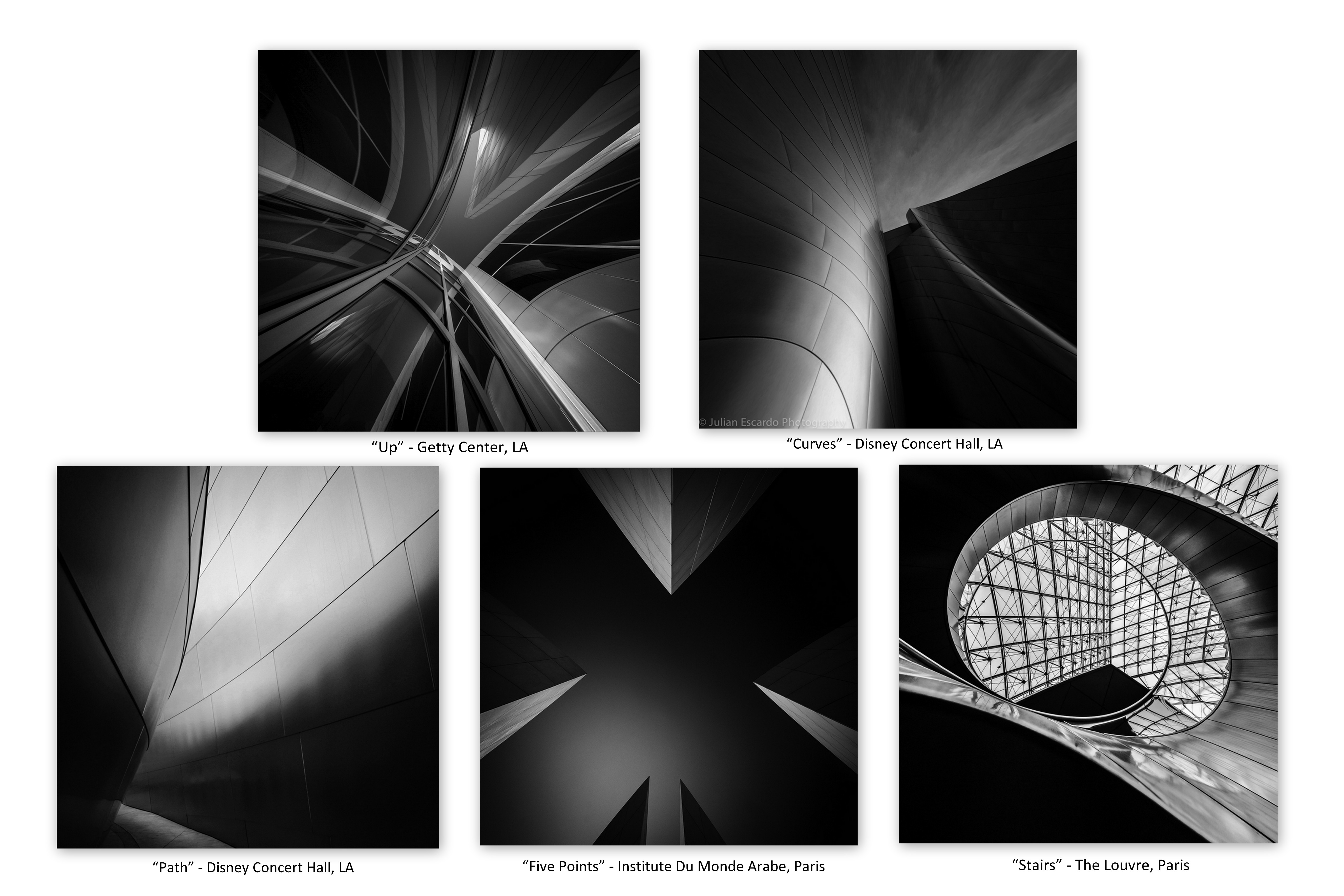
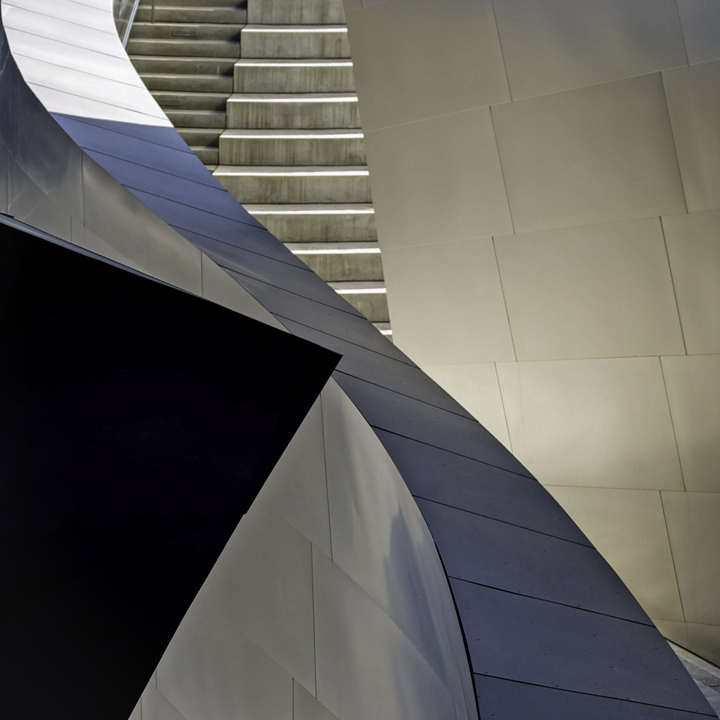
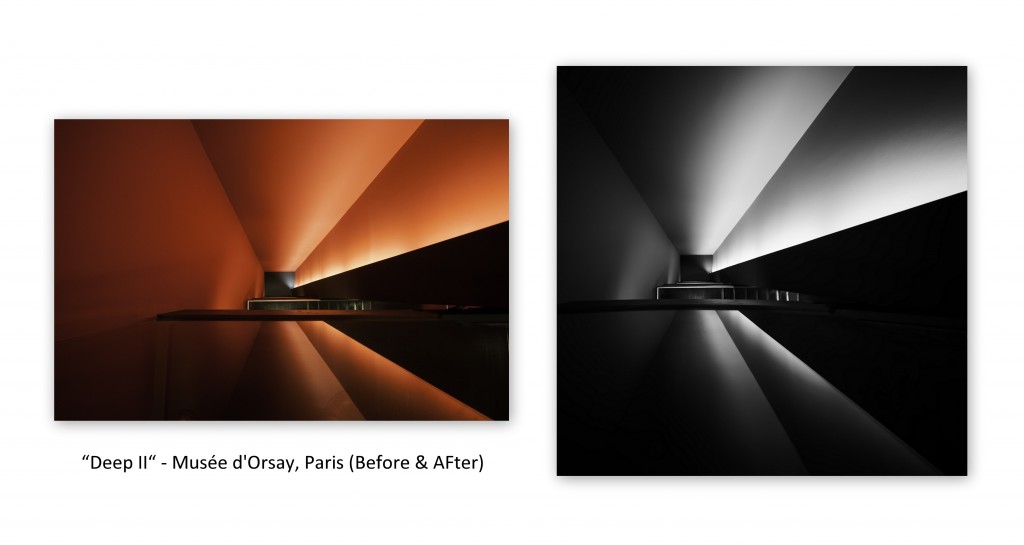

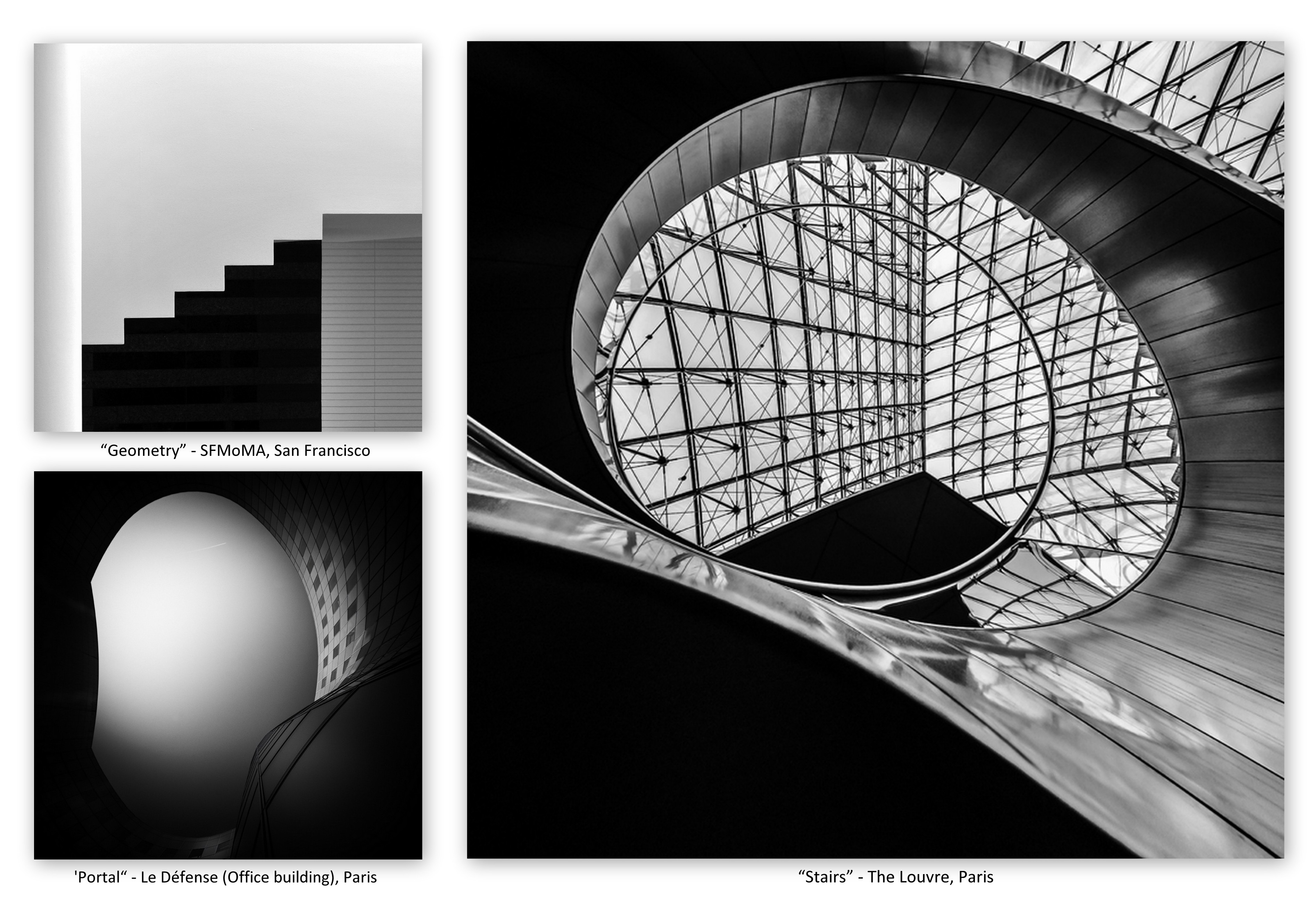
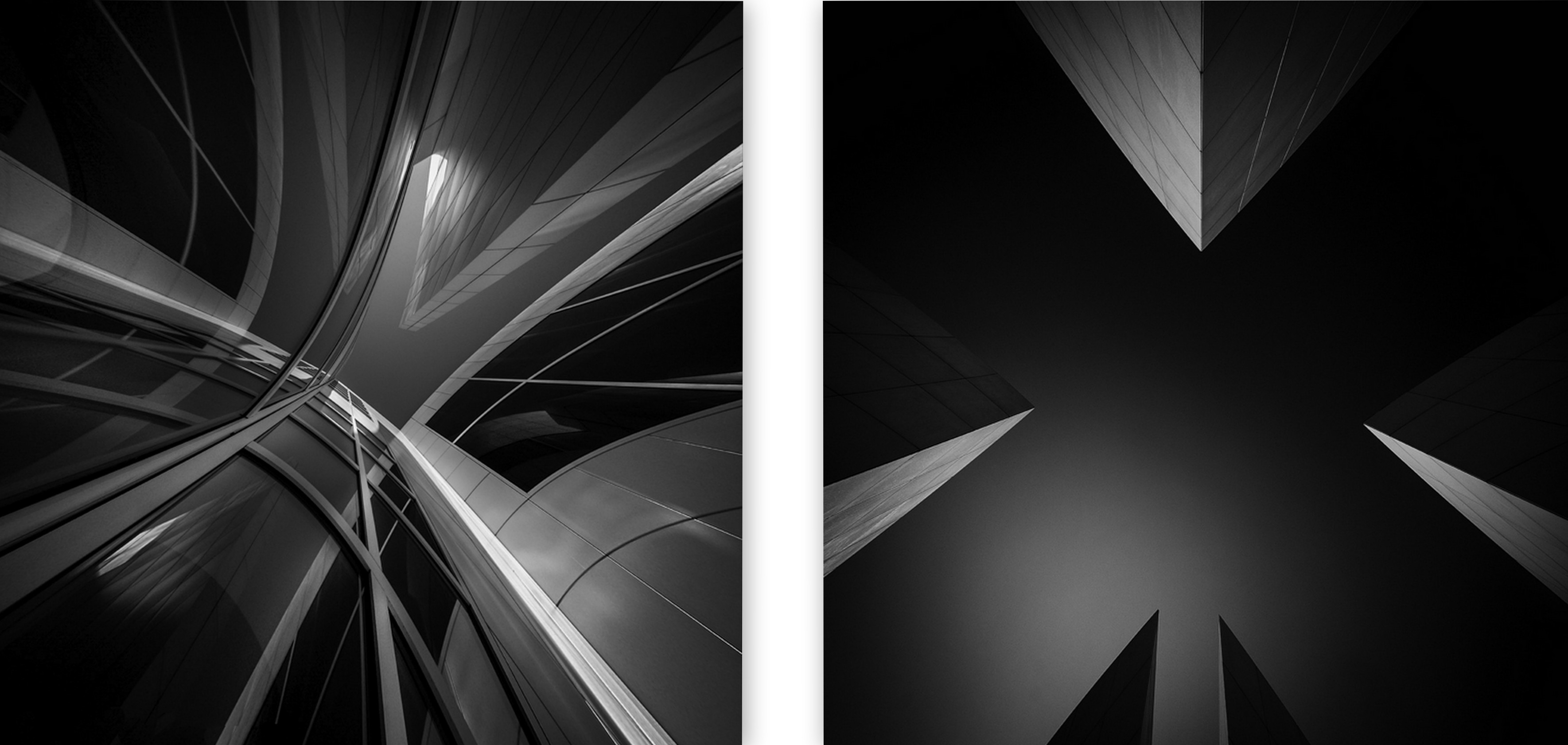
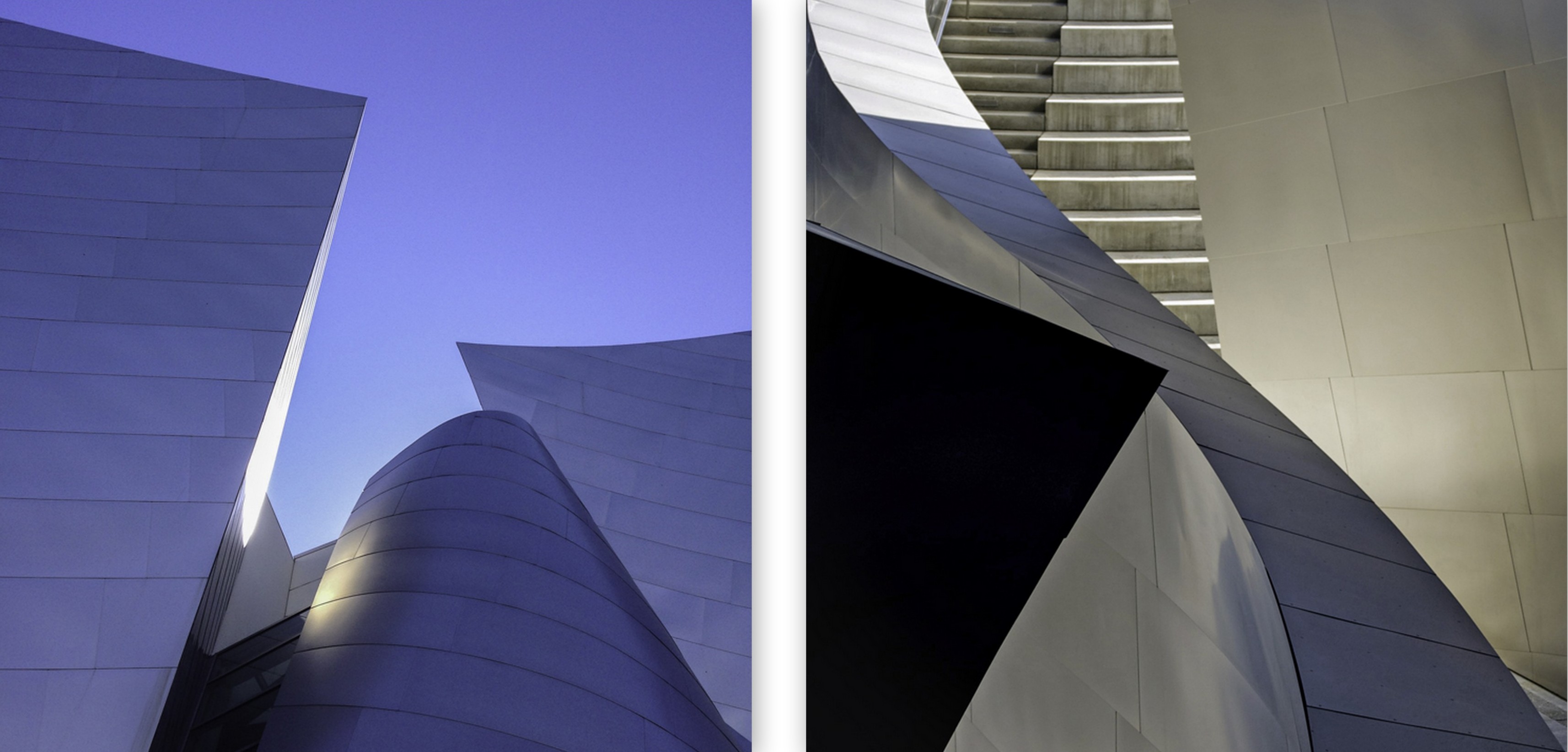

Peter Zurla
1 Jan 2015Thank you for this interview. It has helped me answer questions about my own work.